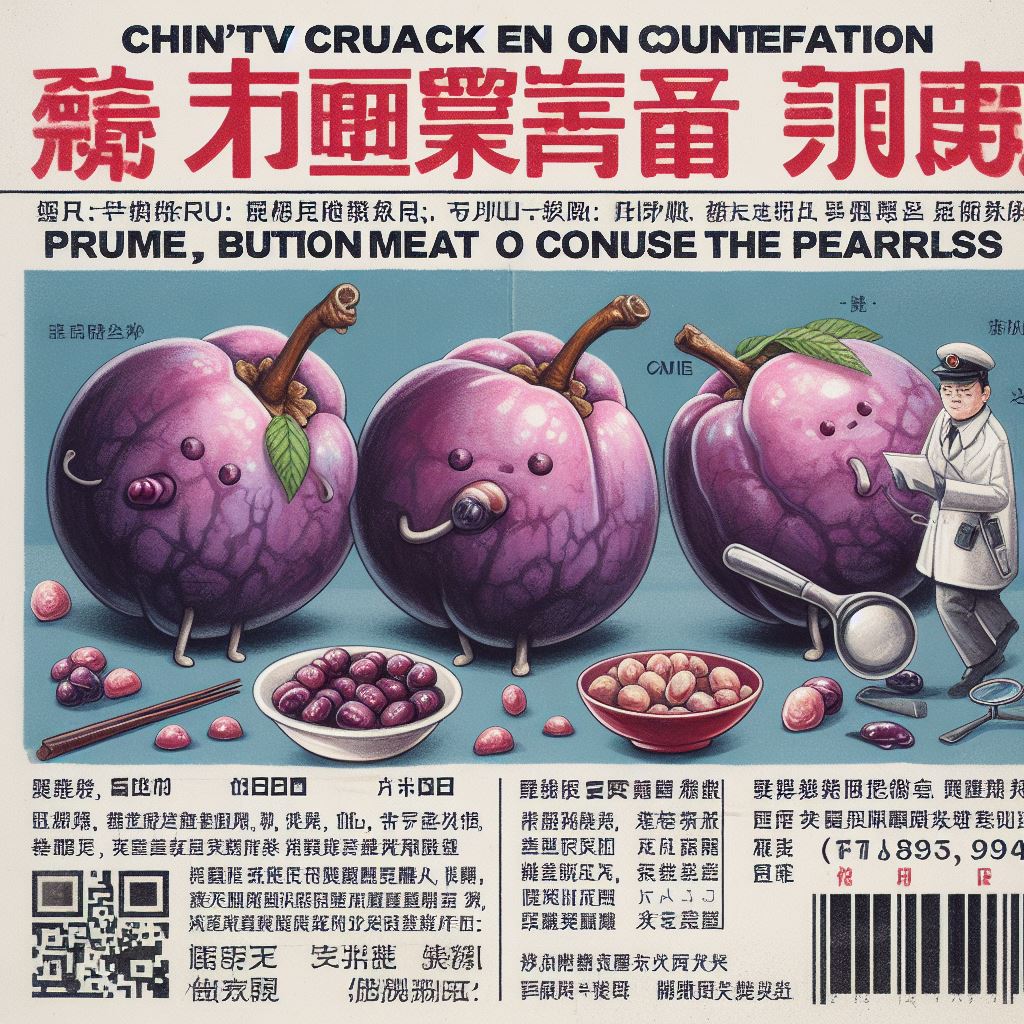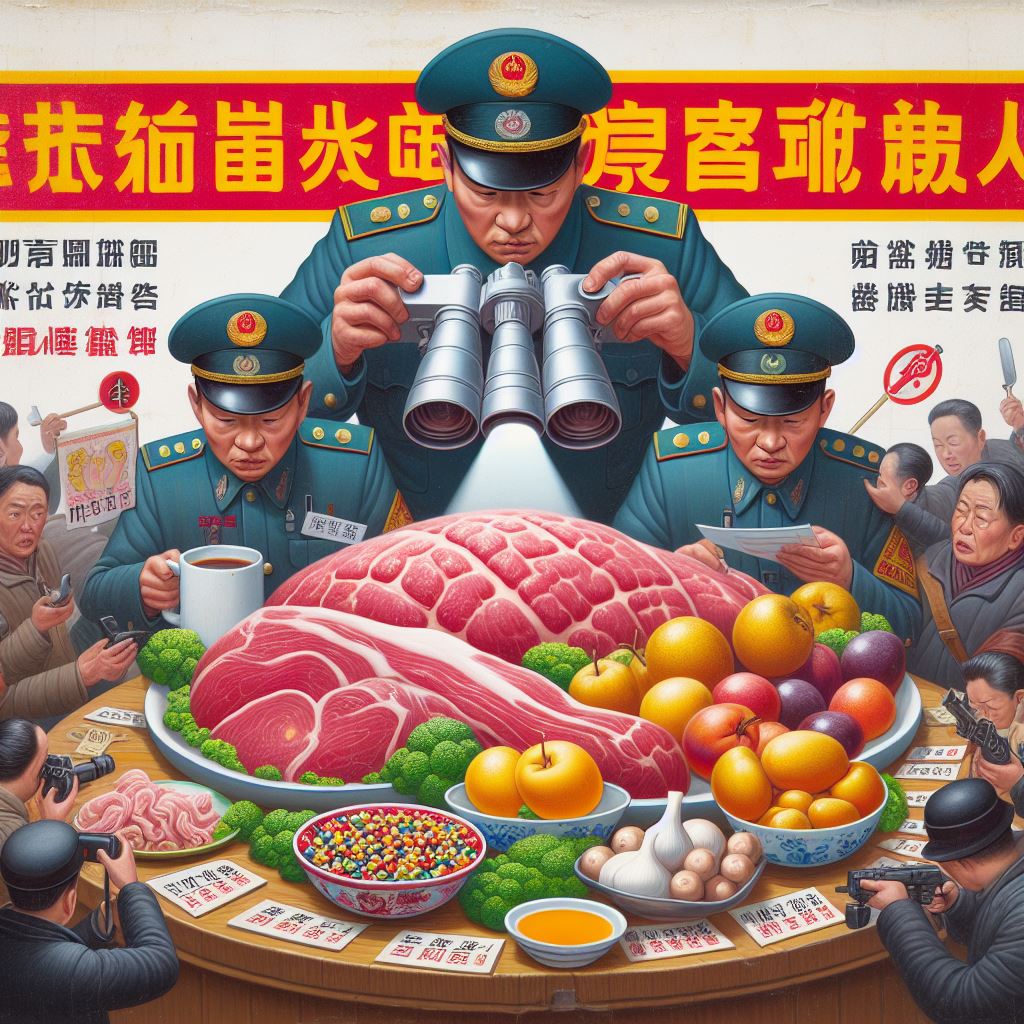中國曝光製作梅干扣肉的廠商使用槽頭肉來魚目混珠。
外面的部分業者可能會採取多種方式來節省製作肉品的成本.他們可能會選擇使用便宜的原料或次級肉品,以減少成本。這可能包括使用較低品質的肉或肉製品,或者使用過期或不新鮮的原料。
為增加肉品的份量,一些業者可能會添加填充物,如澱粉、穀物或其他廉價的填充劑。這樣可以減少使用昂貴的肉類原料,同時增加製品的重量和體積。有些業者會使用肉類替代品,如大豆蛋白、植物蛋白或其他蛋白質來源,以替代真正的肉類。這些替代品通常比肉類便宜,並且可以用於製作各種肉製品。業者還會通過改進製造過程來降低成本,包括優化生產流程、提高生產效率、降低能源消耗和減少廢物產生。
還有一些業者為降低對產品質量和安全性的標準。這可能包括忽略衛生要求、使用低品質或過期原料、以及不合規範的製造方法。總的來說,業者可能會採取多種方法來節省製作肉品的成本,但這可能會對產品的品質和安全性造成潛在風險,因此消費者應當謹慎選擇食品。豬肉是一種常見的食材,而豬身上的不同部位提供了各種口感和風味。以下是一些常見的豬肉部位:
豬肩肉(Pork Shoulder):也稱為豬頸肉或叉燒肉,肉質多汁,適合慢煮或燉煮,常用於製作叉燒和燒肉。
豬腿肉(Pork Leg):也稱為火腿或豬腿排,是較為瘦肉的部位,適合烤或煎烹。分為前後腳肉.
豬肋排(Pork Ribs):分為背肋排和肋軟骨,常用於燒烤或燉煮,有豐富的肉汁和風味。
豬腰肉(Pork Loin):也稱為豬脊椎肉,俗稱五花肉,肉質較嫩,適合煎、烤或燉煮,常用於製作豬排或嫩肉卷。
豬肚(Pork Belly):豬的腹部,肥瘦相間,適合用來煎烤、炸或慢煮,常用於製作叉燒肉或燒肉。
豬肝(Pork Liver):豬的肝臟,提供豐富的營養,可以炒、煮或燉,但要注意食用量以避免攝取過多的維生素A。
豬肚(Pork Stomach):也稱為豬肚皮或豬腹皮,通常用於製作豬肚麵或燉湯。
豬腸(Pork Intestine):豬的腸道部分,可以燒烤、煮湯或炒菜,常用於中式或韓式料理中。
豬腦(Pork Brain):少見的部位,可以燉湯或炒菜,但要注意烹調方式和食用量。
中國央視在3月15日播出的打假節目曝光三家製作梅干扣肉的廠商使用槽頭肉來魚目混珠的情況。正常情況下,梅干扣肉應該是用豬腰肉製作,其中肥瘦相間,市場價格每斤至少20多元人民幣。而槽頭肉的價格則只有3元人民幣一斤,肉質也是瘦中帶肥。雖然其中一部分肉是可以食用的,但接近一半的部分都是淋巴肉,呈現顆粒狀,不能食用的主要原因是淋巴是豬的免疫器官,會吞噬豬肉體內的各種細菌和病毒,是病毒的載體。有一些不肖業者會將這些淋巴肉製作成各種肉製品,例如香腸、滷肉、肉餡、香腸或烤肉等。這些產品一旦流入市場,一般消費者難以分辨,食用後可能導致癌症。
Some businesses may employ various methods to save costs in producing meat products. They might opt for cheaper ingredients or lower-grade meat to reduce expenses. This could involve using lower-quality meat or meat products, or using expired or less fresh ingredients.
To increase the quantity of meat products, some businesses may add fillers such as starch, grains, or other inexpensive additives. This reduces the use of expensive meat ingredients while increasing the weight and volume of the product.Certain businesses might use meat substitutes like soy protein, plant protein, or other protein sources to replace real meat. These substitutes are often cheaper and can be used in various meat products.
Some may also lower costs by improving the manufacturing process, including optimizing production processes, increasing production efficiency, reducing energy consumption, and minimizing waste generation.
Additionally, some businesses may lower their standards for product quality and safety. This could involve disregarding hygiene requirements, using low-quality or expired ingredients, and employing non-compliant manufacturing methods. Overall, businesses may employ various methods to save costs in producing meat products, but this could potentially pose risks to the quality and safety of the products. Therefore, consumers should choose food products carefully.
Pork is a common ingredient, and different parts of the pig offer various textures and flavors. Here are some common pork cuts:
Pork Shoulder: Also known as pork neck or char siu, it is juicy and suitable for slow cooking or braising, commonly used to make char siu and roasted pork.
Pork Leg: Also called ham or pork leg chops, it is a leaner cut suitable for grilling or frying. It is divided into front and hind leg meat.
Pork Ribs: Divided into back ribs and rib tips, commonly used for grilling or braising, with rich meat juices and flavors.
Pork Loin: Also known as pork spine meat or pork belly, it is tender and suitable for frying, grilling, or braising, commonly used to make pork chops or tenderloin rolls.
Pork Belly: The belly part of the pig, with alternating layers of fat and lean meat, suitable for frying, deep-frying, or slow cooking, commonly used to make char siu or roasted pork.
Pork Liver: Provides rich nutrients and can be stir-fried, boiled, or stewed, but attention should be paid to the amount consumed to avoid excessive intake of vitamin A.
Pork Stomach: Also known as pork stomach skin or pork belly skin, usually used to make pork belly noodles or stew.
Pork Intestine: The intestinal part of the pig, can be grilled, boiled, or stir-fried, commonly used in Chinese or Korean cuisine.
Pork Brain: A rare part that can be stewed or stir-fried, but attention should be paid to cooking methods and portion sizes.
On March 15, China Central Television aired an anti-counterfeiting program exposing three manufacturers of preserved pork belly using inferior meat to deceive consumers. Normally, preserved pork belly should be made from pork loin, with a combination of fat and lean meat, priced at least 20 RMB per catty in the market. The price of inferior meat is only 3 RMB per catty, and the meat quality is lean with some fat. Although some parts of the meat are edible, close to half of it consists of lymphoid tissue, appearing granular. The main reason it is inedible is that lymphoid tissue is the pig's immune organ, which can ingest various bacteria and viruses in the pig's body, serving as a carrier for viruses. Some unscrupulous businesses may turn this lymphoid meat into various meat products such as sausages, braised meat, meat fillings, sausages, or grilled meat. Once these products enter the market, consumers generally have difficulty distinguishing them, and consumption may lead to cancer.




照片:DALLE3
- 1
- 2
- 3
- 4
